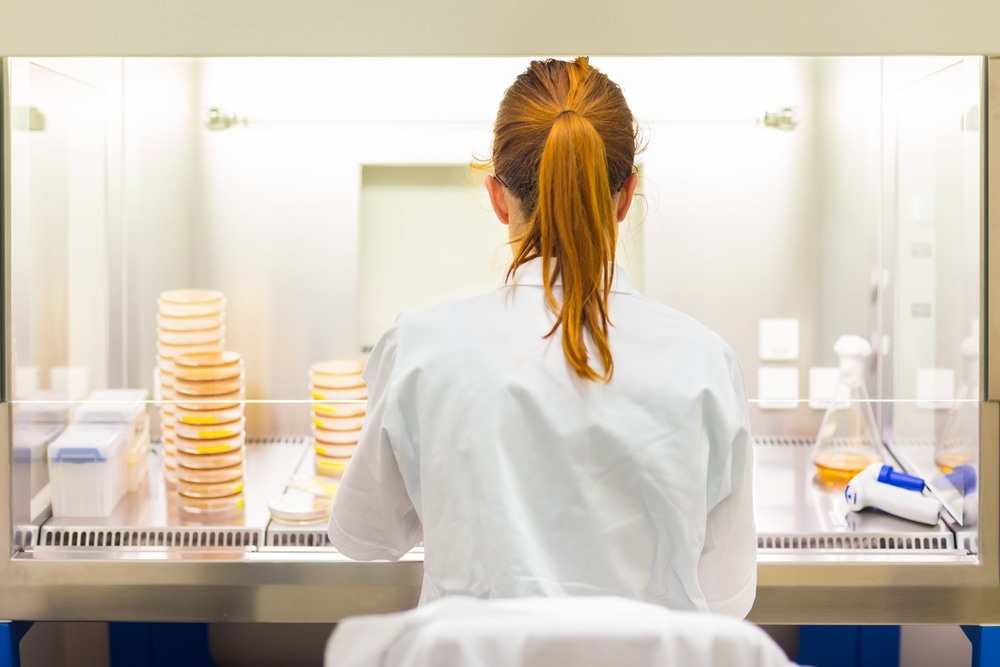In the field of life sciences, preparing samples correctly and efficiently is critical. Microwave digestion systems play a key role in this preparation process, ensuring samples are broken down uniformly and quickly for accurate analysis. These devices heat and degrade various materials, including metals, plants, and medications, using microwave energy to prepare them for in-depth examination.

Image Credit: Vladimir Borovic/Shutterstock.com
These systems are divided into open and closed vessel types, catering to different sample sizes and processing requirements. Open vessel systems are better for larger samples but take longer, while closed vessel systems handle smaller samples more quickly. Constructed from materials like fluoroplastics and quartz, these systems are designed to withstand high temperatures and corrosive substances.
Microwave digestion systems, pivotal in life sciences, facilitate diverse analyses, including elemental, protein, DNA/RNA, metabolite, and drug studies. Here, we explore their functionality, varied applications in life sciences, and notable commercial models.
How Microwave Digestion Systems Work
Microwave digestion is a simple yet powerful process. It heats samples in a sealed vessel using microwave radiation, quickly raising the temperature and pressure. This rapid heating breaks down the samples much faster than traditional methods like a hot plate or an oven.
A standard microwave digestion system includes a generator to produce the microwaves, a special cavity for placing the samples and a system to control temperature and pressure. The samples, typically mixed with a suitable solvent or acid and placed in vessels made of materials like Teflon or quartz, are then exposed to microwave energy.
Exciting water molecules and adding acids or bases homogenizes samples, making them ready for analysis. It is preferred over methods like ashing, which can lose analytes, or fusion decomposition, which is labor-intensive and suffers from interference. Microwave digestion is versatile, applicable across various industries, and works with a broad range of samples. The key to its effectiveness often lies in the choice of acid, with nitric acid being a common choice for organic samples.
Applications and Use Cases
With its many uses ranging from elemental analysis to forensic research, microwave digesting systems have established themselves as essential tools in the life sciences. These systems have a reputation for effectively preparing samples for various analytical methods.
Microwave digestion systems play an essential role in elemental analysis. They determine the concentration of elements in biological samples such as tissues, blood, and food, which is crucial for understanding biological processes and nutrient compositions. These systems also analyze environmental sample data, focusing on heavy metal contamination detection. This application is essential for maintaining the safety and health of the environment by monitoring contaminants and their effects on ecosystems and human health.
Another application for microwave digestion systems is protein analysis. They make quantifying total protein concentration in tissues and cells possible, which is critical for biochemistry and disease diagnostic studies. Furthermore, these systems investigate protein changes, including phosphorylation and glycosylation. These modifications are crucial for understanding protein function and regulation, making an essential contribution to molecular biology and pathological research.
Microwave digestion is a crucial stage in extracting DNA and RNA nucleic acids from tissues and cells. This process is necessary to prepare samples for polymerase chain reaction (PCR) and other analytical techniques, which will progress genetic research and diagnostic studies.
These systems are essential for metabolite analysis as well. They make it easier to extract metabolites from tissues and cells, which is necessary for understanding metabolic pathways and their consequences in health and disease. These systems also help to measure specific metabolite concentrations, providing information about the organism's metabolic condition.
Furthermore, these systems are employed in drug discovery to degrade tissues and cells in preparation for drug screening assays. They also aid in analyzing drug metabolism and pharmacokinetics, allowing for faster development and testing of new pharmaceuticals.
Finally, microwave digesting systems are essential in forensic studies. They break down bones and tissues for DNA analysis, an important element of forensic identification. They are also employed in forensic toxicology to identify drug residues in hair and nails.

Image Credit: Matej Kastelic/Shutterstock.com
Commercial Examples
Microwave digestion systems are at the forefront of modern laboratory processes, with several key players in the industry developing sophisticated equipment.
CEM Corporation stands out with its innovative microwave digestion systems like the MARS 6 and recently introduced the BLADE, a game-changer in elemental sample preparation. Blending speed, simplicity, and performance, the BLADE epitomizes CEM's commitment to transforming sample prep. This system, designed by chemists for chemists, offers the fastest digestion. It features high-purity quartz vessels and snap-on caps for quick setup and a barcode scanner for efficient sample tracking.
Anton Paar has been a significant contributor to this field as well, especially with their Multiwave PRO system, which excels in flexibility, accommodating various microwave digestion and sample preparation methods. Their expertise spans over 40 years, offering instruments like the compact Multiwave GO Plus for routine samples and the versatile Multiwave 5000 for a range of applications from digestion to synthesis. The Multiwave series, with user-friendly features and efficient designs, caters to diverse laboratory needs, ensuring precision and convenience in sample processing.
Milestone Inc. has set the bar high with its ETHOS UP system, a standout in the microwave digestion market since 1988. Known for its high performance and user-friendliness, ETHOS UP brings precision to sample digestion, vital for accurate metals analysis in laboratories. This system operates at higher temperatures and pressures than traditional methods, allowing it to handle a wider range of samples with minimized cross-contamination and volatile loss. ETHOS UP exemplifies Milestone's commitment to effective, safe, and productive microwave sample preparation.
SCP SCIENCE has also made significant advances with its EasyPREP series, which offers a blend of automation and simplicity. Their systems, including the high-throughput NovaWAVE and the convenient DigiPREP graphite Block Digestion Systems, cater to a diverse range of applications. NovaWAVE stands out for its exceptional sample processing speed and ability to handle multiple samples simultaneously with independent methods.
Sources:
Santamaría, et al. (2013) Application of microwave digestion and ICP-MS to simultaneous analysis of major and trace elements in aerosol samples collected on quartz filters. dx.doi.org/10.1039/c2ay25724f
CEM Corporation. CEM Introduces the Future of Microwave Digestion. Available at: https://cem.com/uk/cem-introduces-the-future-of-microwave-digestion
Anton Paar. Microwave Digestion Systems. Available at: https://www.anton-paar.com/uk-en/
Labcompare. Microwave Digestion System / Microwave Digester. Available at: www.labcompare.com/.../
DEPALMA, A. PHD (2020). How to Achieve Consistency with Microwave Digestion. Available at: www.labmanager.com/how-to-achieve-consistency-with-microwave-digestion-21854
Raykol Group. Principle and Application of Microwave Digestion INSTRUMENT. Available at: www.raykolgroup.com/...lication-of-microwave-digestion-instrument.html
Milestone Srl. Quality analysis starts with great sample preparation. Available at: https://www.milestonesrl.com/products/microwave-digestion
CEM. Microwave Digestion System. Available at: cemcontenttype.s3.amazonaws.com/.../brochure-blade-b171-english.pdf
PerkinElmer Inc. MPS 320 Microwave Digestion System. Available at: www.perkinelmer.com/.../mps-320-w-16-mr-50-vessels-and-1dpc-n3136005
Daniel, C., et al. (2004) The nail and hair in forensic science. Journal of the American Academy of Dermatology, 50. pp. 258-61. doi.org/10.1016/j.jaad.2003.06.008
Last Updated: Feb 21, 2024